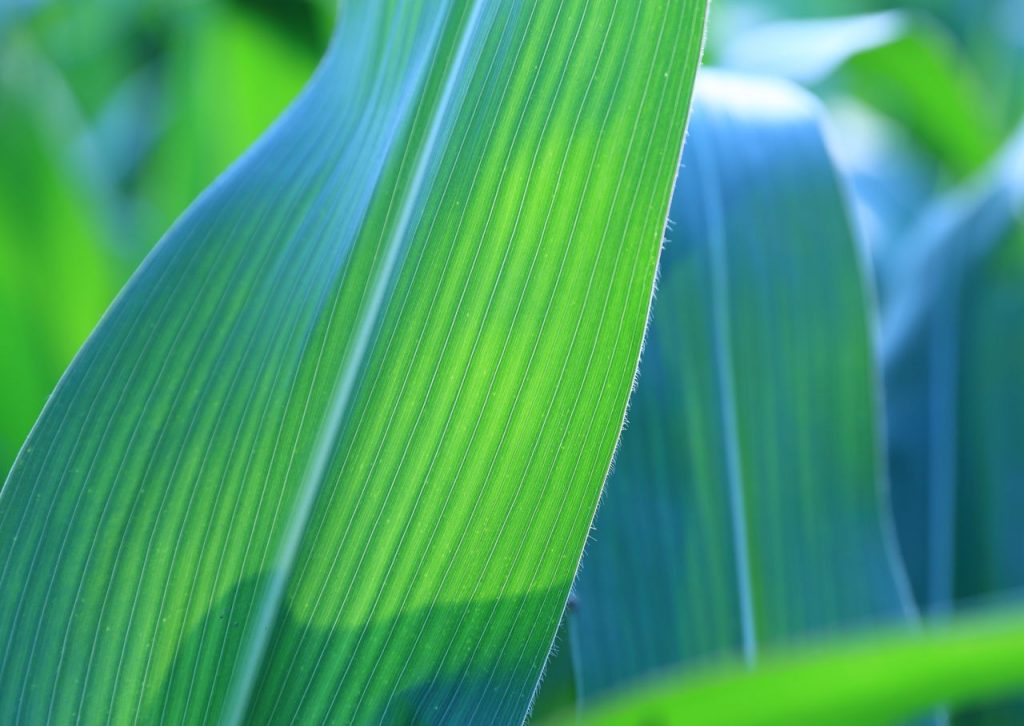Monocotyledonous plants commonly known and referred to as monocots, are grass and grass-like plants, the seeds of which commonly contain just a single early stage or one embryonic leaf or cotyledon.
In agriculture the majority of the biomass produced comes from monocotyledons. These include not only major grains (maize rice and wheat, etc.), but also forage grasses, sugar cane, and the bamboos. Other economically important monocotyledon crops include various palms, bananas and plantains, gingers and their relatives, turmeric and cardamom, asparagus, pineapples, sedges and rushes, and leeks, onion and garlic.
Many houseplants are monocotyledons. Most of the horticultural bulbs, plants cultivated for their blooms, such as lilies, daffodils, irises, amaryllis, cannas, bluebells and tulips, are monocotyledons.
Definition of monocotyledonous plants
A monocotyledonous plant can be defined as one that contains one cotyledon or one embryonic leaf, they’re also known as monocots. The existence of only one seed leaf (cotyledon) identifies the majority of monocotyledons. This feature is used to contrast the monocots with the dicotyledons or dicots which typically have two cotyledons.
Monocot plants are marked by seeds with a single cotyledon, parallel-veined leaves, scattered vascular bundles in the stem, the absence of a typical cambium, and an adventitious root system. Flower parts typically come in multiples of three, and the pollen grains characteristically feature a single aperture (or furrow).
Monocots are distinguishable from other angiosperms both in terms of their uniformity and diversity. On the one hand the organisation of the shoots, leaf structure and floral configuration are more uniform than in the remaining angiosperms, yet within these constraints a wealth of diversity exists, indicating a high degree of evolutionary success.
History of Monocotyledonous plants
Monocots form a monophyletic group, meaning that they share a common evolutionary history. It is widely believed that the monocots were derived from primitive eudicots. Given that the various physical features of monocots are regarded as derived characteristics within the angiosperms, any plant more primitive than the monocots in these several respects would certainly be a eudicot.
Some of the earliest known monocot fossils are pollen grains dating to the Aptian Age of the Early Cretaceous Epoch. Molecular clock studies (which employ differences in DNA to estimate when a group split from its ancestors) suggest that monocots may have originated as early as 140 million years ago.
Evolutionary diversification among the monocotyledons appears to have been constrained by a number of fundamental features of the group, most notably the absence of a typical vascular cambium and the parallel-veined rather than net-veined leaves. Within these constraints, the monocots show a wide range of diversity of structure and habitat.
They are cosmopolitan in their distribution on land. They also grow in lakes, ponds, and rivers, sometimes free-floating but more often rooted to the bottom. Some of them grow in the intertidal zone along the seashore, and a few are submerged marine plants rooted to the bottom in fairly shallow water along the shore.
Read also: Difference between monocot and dicot

Characteristics of monocots
The physical characteristics include that monocots have seeds with single cotyledons, scattered vascular bundles in the stem, parallel-veined leaves, the absence of a typical cambium and a fibrous root system. Flower parts come in multiples of three. In other words;
- They have an embryo with a single cotyledon.
- Pollen with a single furrow or pore.
- They have flowering plants in multiples of three.
- They are flowering plants (angiosperms).
- Major leaf veins are parallel.
- Stem vascular bundles scattered.
- Roots are adventitious.
- Secondary growth absent.
Examples of monocotyledonous plants
some examples of monocotyledonous plants include;
- Barley (Hordeum vulgare)
- Bread wheat (Triticum aestivum)
- Coconut (Cocos nucifera)
- Date palm (Phoenix dactylifera)
- Maize (Zea mays)
- Oat (Avena sativa)
- Ragi (Eleusine coracana)
- Rice (Oryza sativa)
- Sorghum (Sorghum bicolor)
- Sugarcane (Saccharum officinarum)
- Pineapple (Ananas comosus)
- Onion (Allium cepa)
- Garlic (Allium sativum)
- Ginger (Zingiber officinale)
- Banana (Musa sp)
- Plantain (Musa × paradisiaca)
Read also: Classification of crops
The bottom line
Monocots are a group of flowering plants belonging to the class Monocotyledonae) of Angiospermae , characterized by having only one cotyledon in the seed and an endogenous manner of growth. Examples of monocotyledonous plants are the palms, grasses, orchids, and lilies.
